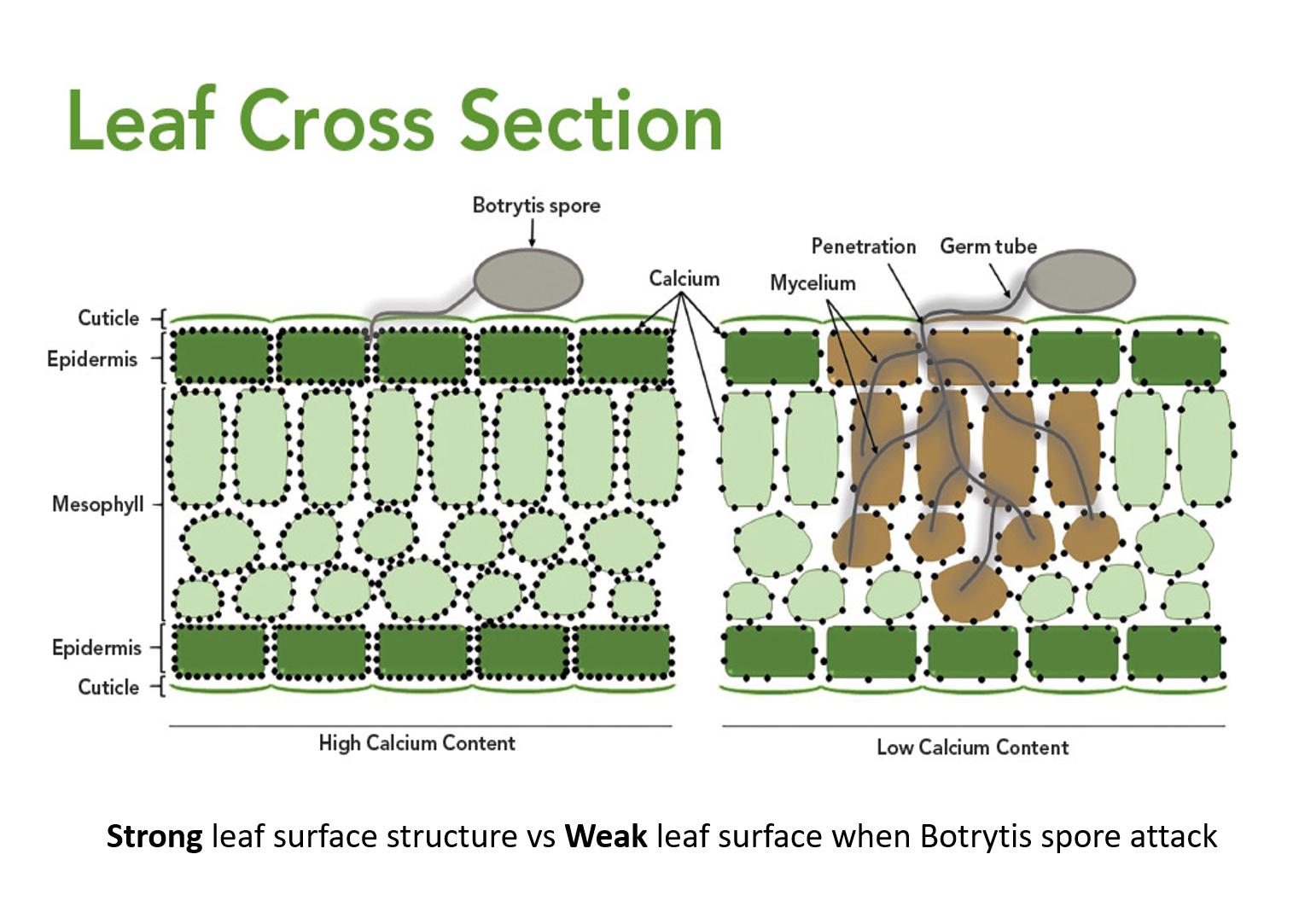Receiving our special guest from ROAIA company in Egypt
26 July 2023

 MCFP
MCFP
The primary function of calcium in plant growth is to provide structural support to cell walls. Calcium also serves as an important messenger when plants are physically or biochemically stressed.
Calcium, in the form of calcium pectate, is responsible for holding together the cell walls of plants. When calcium is deficient, new tissue such as root tips, young leaves, and shoot tips often exhibit distorted growth from improper cell wall formation.
Calcium works by binding with the pectic material in cell walls, making it harder against external pathogens to penetrate the cell and cause infection. More specifically (for example), after the Botrytis spore germinates on the plant surface, it forms a germ tube that penetrates the cell wall of the plant tissue, and then forms mycelium that colonizes the plant tissue to feed on the contents of those cells (picture below). The fungus secretes an enzyme to help digest the cell wall of the host plant. Once infection occurs, the cell dies and the mycelium continues to the next cell. Higher calcium concentrations allow more pectic bonds to be formed and improve the cell’s resistance to breakdown by the enzymes produced by Botrytis.
Therefore, plant tissues that are poor in calcium are more susceptible to destroy, whether due to a mechanical or pathological cause.
This important role of calcium provided in MCFP calcium range:
SuperCal, Mofcal, Mofcal Gel, Calcilon, CalciBor and Borocal plus.